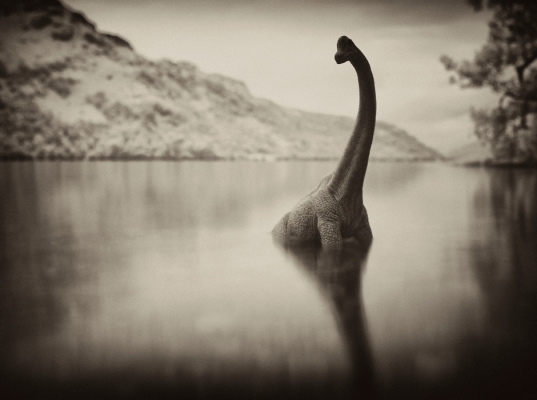Myths and Legends of Scotland
16th July 2024
Scotland is an enchanting land full of mystical tales and ancient secrets. So much of the land is steeped in folklore, with beautiful landscapes and captivating stories just waiting to be discovered by curious adventurers.
So join us on a journey through some of Scotland’s most popular myths and legends, and learn more about the lands where you can find these fabled beings.
The Loch Ness Monster
Let’s start with our most famous legend! Nestled in the Scottish Highlands is Loch Ness, a large body of water that takes its name from the River Ness which flows down from Inverness to the northern end of the loch. It’s here where you’ll find the legend of the Loch Ness Monster, affectionately known as Nessie. The earliest reported sighting of Nessie took place in 565 AD by Saint Columba, the Irish monk was staying in the lands of the Picts when he saw a man in the river being attacked by a “water beast”.
Ever since, countless tales have surfaced about the elusive Loch Ness monster. Between supposed sightings and sonar readings, there is plenty of information that points towards the possibility of Nessie actually existing. But whether you’re a skeptic or a believer, Loch Ness is an absolute must-visit for anyone interested in the legend.
Loch Ness itself is a beautiful freshwater loch in the Highlands that stretches far and wide. The loch can be traversed by boat, or you can enjoy a picnic on the shore as you gaze at the serene waters and rolling hills. The impressive Urquhart Castle overlooks the loch and makes for an amazing walking tour as you explore one of the largest ruined castles in the Highlands.
Nessie Image Credit: Simon Bradfield

Fairies of the Isle of Skye
The Isle of Skye is an enchanting landscape where fairies, both naughty and nice, roam the hillsides. Travel to the south of the isle to reach the large valley of Glen Brittle, where natural pools and waterfalls converge in an ethereal display of vivid blue and green waters. Legend has it that mischievous fairies dance in the moonlight around these pools, casting spells on the land and enchanting those who are lucky enough to spot them.
These magical energies don’t just stop at the pools. Head over to the hills of Uig and you’ll find the Fairy Glen with its otherworldly miniature landscapes and lush green fields. The view is like something out of a fantasy movie – surreal land formations dotted with unusual stone patterns and a basalt crop - a natural land formation that looks strangely like a ruined castle perched high on a hill, nicknamed ‘Castle Ewan’.
The Old Man of Storr
Another site on the Isle of Skye is The Old Man of Storr on the Trotternish Ridge, a striking rock formation said to be the thumb of a giant who once roamed the island. Legends say that the giant and his wife were turned to stone by the gods, forever frozen in the pose that we see today. Hiking up The Old Man of Storr awards breathtaking views and a fulfilling sense of exploration and adventure.

Beira, The Queen of Winter
Beira, Queen of Winter, sometimes known as The Hag of Beara or Cailleach, is a Gaelic deity who is associated with the creation of the landscape and the weather. She controls the storms and winter seasons, and is one of the most well-known figures in local folklore. With her stormy temper and icy breath, she is said to rule the winter months as both a creator and a destroyer, shaping the Scottish highlands to her liking and bending the elements to her will.
According to legends, Beira is the deity responsible for not only the harsh Scottish winters, but also the formation of the highland mountains and lochs. When spring arrives, it’s said that Beira drinks from the Well of Eternal Youth to rejuvenate herself, leading to warmer seasons as her frigid reign comes to an end. The legend of Beira is one that highlights the connection between Scotland’s mystical beauty and its enchanting cultural heritage.
Beira’s stories travel across Scotland. Some legends say that she drinks from the wells near Loch Awe, and other stories say she uses a whirlpool called Corryvreckan near the island of Jura to wash her plaid dress. Other myths say that her throne sits atop Ben Nevis, the tallest mountain in the United Kingdom. The legend of the Queen of Winter has enchanted many parts of the country, and she has touched many parts of Scotland in one way or another.
Baobhan Sith
The Baobhan Sith is a female fairy that is famous in Scottish folklore. These vampiric fairies appear as beautiful women who seduce their victims before attacking and killing them. If you venture into the dense forests of Scotland, legends say that you may hear the whispers of the Baobhan Sith, luring unsuspecting travelers into wild dances to drain their life force. While fairies are often seen as magical and cheerful beings in some contexts, they have a dark and sinister background in parts of Scotland’s fairy lore.

Puck's Glen - Jaceyned
The Kelpies
A kelpie is a perilous shape-shifting water creature that can take the form of a horse on land. It often appears to its human victims as a gray or white horse, luring them to climb onto its back. Once mounted, the kelpie drags them down to a watery grave.
The Helix Park near the town of Falkirk is home to two huge Kelpie monuments - the largest equine sculptures in the world. The figures, created by artist Andy Scott, are 100 feet tall and weigh over 300 tonnes each! Many of our tours visit the Kelpiesa as we travel through central Scotland.
Fingal’s Cave
Fingal’s Cave is a favorite spot for many of our Driver Guides. Located on the uninhabited island of Staffa, off the Isle of Mull, this sea cave is renowned for its strange natural acoustics. Owned by the National Trust for Scotland as part of a national nature reserve, the cave was named after the heroic character - Fingal the Giant - in an epic poem by 18th-century Scottish poet-historian James Macpherson.
Sometimes known as Uamh-Binn, or "The Cave of Melody," Fingal's Cave has long been associated with the Giant's Causeway in Northern Ireland. As the story goes, an ancient bridge was constructed between the two sites by the Irish giant, Fionn mac Cumhaill. While building the pathway towards Scotland, Fionn learns that his enemy, the Scottish giant Benandonner, is approaching for a fight. Knowing that he cannot match Benandonner’s strength, Fionn seeks help from his wife, Oona. She cleverly disguises Fionn as a baby and hides him in a cradle. Oona then bakes some cakes, hiding iron in a few, and awaits the giant's arrival.
When Benandonner arrives and doesn't find Fionn, he waits at his house where Oona offers Benandonner some iron-filled cakes, and when he bites into them, he chips his teeth. Oona laughs, calling Benanodonner weak, and tells him that her husband eats those cakes without any trouble. She then feeds a regular cake to the disguised Fionn. Seeing the "baby's" strength, Benandonner becomes terrified of facing the father and flees back to Scotland, destroying the causeway behind him to prevent Fionn from following.

Myths and Legends of Scotland
Whether or not you believe in fairies and giants, the Scottish hills, lochs and woodlands offer an eerie and mysterious beauty that is sure to send your imagination running wild. From the magical native woods of Glen Affric to the fairytale backdrop that is Puck’s Glen, there’s no shortage of mystical places to explore.
Browse our tours to find your perfect itinerary. Adventure awaits…



